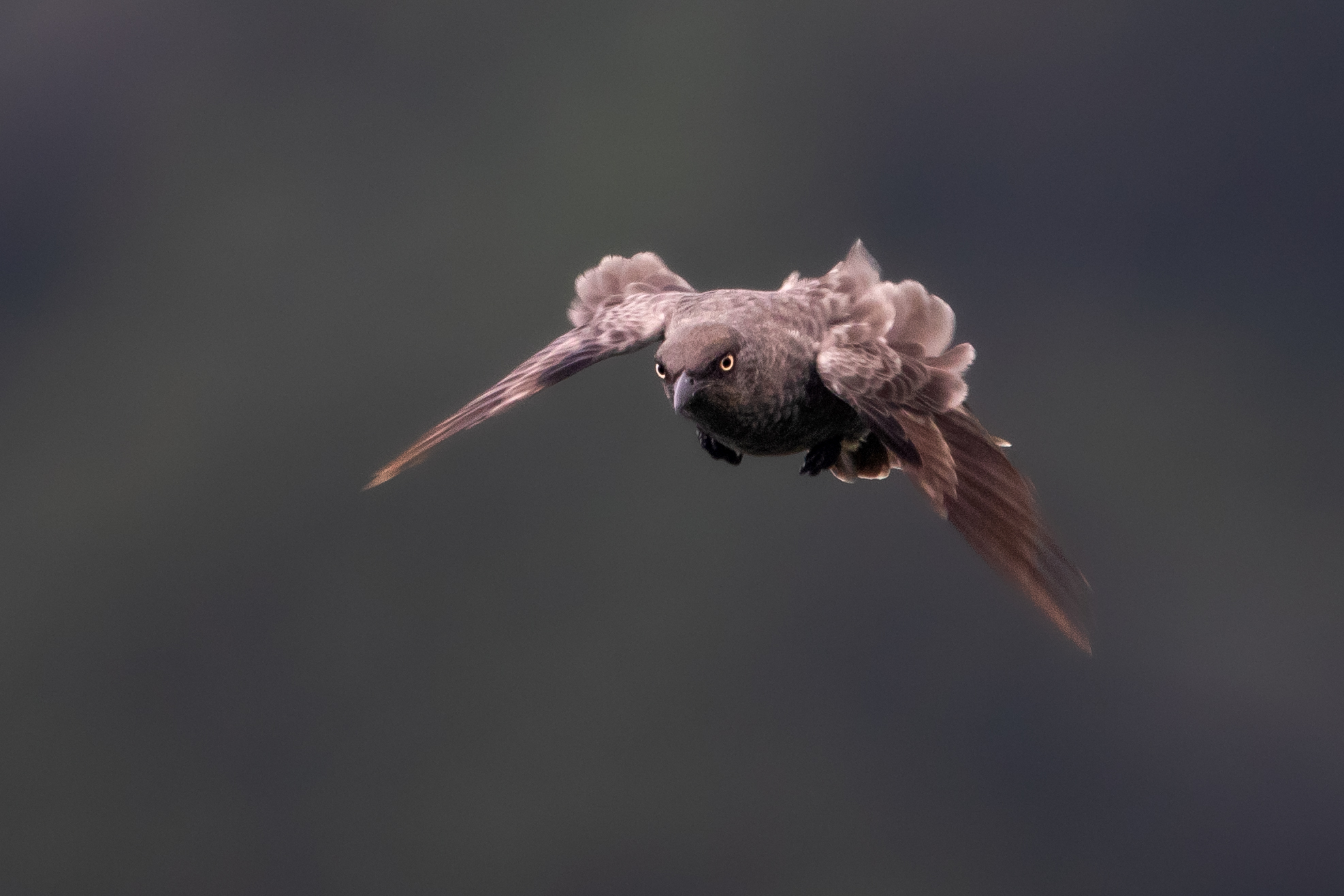The mysteries of the Pacific Starlings
Have you ever been for a walk in the forest and been lucky enough to catch a glimpse of a smokey dark grey bird with pale yellow eyes? If you have, you may have been looking at the shy and hard to find ‘Ī’oi or Rarotonga starling.
Although it shares the name starling with over a hundred other bird species, the ‘Ī’oi and other pacific starlings are quite different from starlings in other parts of the world. For example, the golden-breasted starling in Africa is a colourful iridescent green, purple, blue and gold starling with a long tail. There is the European starling, darker in colour and known for flying in massive flocks called murmurations which sometimes have thousands of birds flying in coordination with each other. On the other hand, Starlings from the pacific are typically darker colours (brown, grey, or black). They mostly fly on their own or in small groups, live deep in island forests, and are much more shy and hard to spot.
In contrast to their rowdy and commonly seen cousins, the shy nature of these birds, and thick forest in which they live has made them very difficult to research and there is little documented knowledge about most of the starlings in the pacific.
This is especially true of our local starling, the ‘Ī’oi. Only found on Rarotonga, the ‘Ī’oi can be found through the forested valleys but can be hard to spot and isn’t commonly seen. You may have more luck listening for them, and you can find some recordings online to recognise their call. Only the males are thought to sing and their call sounds like whistling ii-oi and other bell- like and trilling sounds. One of the important roles that we know the ‘Ī’oi plays in the forest is as the only seed disperser for red mistletoe–a very cool and beautiful native parasitic plant species. They also help pollinate our endemic Pua Neinei (Rarotonga Fitchia) , a beautiful orange flowering mountainous plant only found on Rarotonga.
Historical records have suggested that ‘Ī’oi were once very common, easy to see and were found all over the island, even right down by the coastline. Since the 1800’s the population has seemed to decline and retreat inland but there is no clear answer to how many ‘Ī’oi are alive today. We also don’t know for sure what is causing the ‘Ī’oi to move inland, whether it is competition with the Myna bird in open areas like fields or if rats are limiting their success. Introduced rats are thought to be the reason that the Mauke Island starling, locally known as the Kīkoi went extinct, which was the closest relative to the ‘Ī’oi
Finding out how many ‘Ī’oi are around today, how well they are doing, and what might be threatening them is incredibly important to make sure we protect them as best as we can. Since ‘Ī’oi are only found on this island, it is vital we take care of this species as we won’t get a second chance if they are lost like the Mauke Island starling. With a clearer picture we will be able to see what we can do to help and raise the alarm if necessary.
TIS is hoping to set up some long term surveying to keep an eye on the ‘Ī’oi population and learn more about this species that can’t be found anywhere else in the world. If you are interested in helping with surveys or learning more about the ‘Ī’oi, please get in touch with TIS. Next time you are out for a walk through the forest, keep your eyes out for this special bird!

